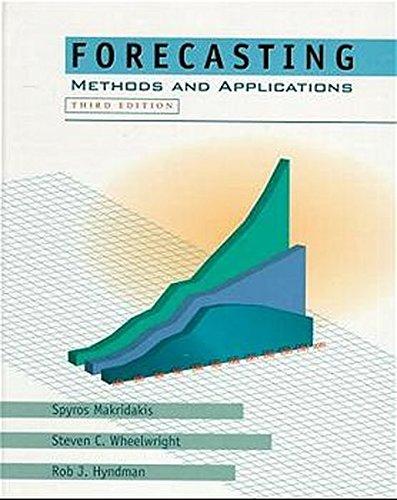Question
Ferguson Foundry Limited (FFL) manufactures two models of wood stoves, Basic and Deluxe. FFL's president, Mark Ferguson, has just reviewed the financial statements of FFL
Ferguson Foundry Limited (FFL) manufactures two models of wood stoves, Basic and Deluxe. FFL's president, Mark Ferguson, has just reviewed the financial statements of FFL for the fiscal year ended March 31. The results for the year were a shocking disappointment. Despite having sold more stoves than budgeted at higher prices, profits were less than expected in the budget
In the fifth month of the year, the sales and marketing department realized that there was going to be much stronger demand than expected, due to announced increases in energy prices and a forecasted La Nia. Given that factory production is limited to a total of approximately 12,000 units, they decided to raise prices on both models. They decided on a price increase of around 30% for the Basic version and a price increase of around 2% for the Deluxe version. The purpose of this difference in percentage increases was to shift demand away from Basic to the more profitable Deluxe. In order to justify this increase in FFL's new marketing materials, they authorized a change in the quality of materials used in producing the stoves. This resulted in an approximate 10% price increase for materials, but this seemed easily covered by the price increases, given that budgeted materials costs made up less than 33% of budgeted total costs.
Sales and Marketing seemed to make all the right moves, as they generated sales in units that were very close to capacity. They were all over in the sales office patting each other on the back and high-fiving one another's "genius." Every once in a while, one of the sales staff would yell out, "Who did it?" and everyone in the office would scream in unison, "We did it!" One particularly brash sales person even threatened to leave the company if Mark didn't "properly" recognize his department for "all the money we put in the pockets of Mark's family."
However, things were much more somber in the manufacturing plant. They were reeling from the flurry of activity over the past seven months. It had been difficult to handle the increase in production. A major reason was that it was impossible to hire more skilled labor. The production manager had to choose between paying skilled labor overtime or shifting work to the unskilled labor. Since skilled labor received $24.75 for an overtime hour, the equivalent to almost two hours of unskilled labor, he decided to reduce the hours that skilled labor spent on Basic and hire more unskilled labor to get the work done. However, even that had been a difficult order for human resources to fill, and he ended up having to pay unskilled labor overtime to generate enough hours to get the work done. On top of that, the unskilled workers lack of experience resulted in a significant amount of wasted time and materials in making the Basic product. Exasperated, he had told Mark, "And to top it all off, our variable overhead number for Basic is higher than budgeted! How can that be the case when our volume is down? That can't be my fault! Those accountants are always sticking me with some costs that I don't understand."
The following information is available: a statement of standards prepared as part of the budget process (Exhibit A), some actual market and job-cost data (Exhibit B), and a statement of budgeted and actual results (Exhibit C).
Exhibit A
Unit Cost Standards
Cost Standards:
Basic
Deluxe
Materials per Unit
70 kilograms
190 kilograms
Labour per Unit
(unskilled = 37.5%, skilled = 62.5%)
6 hours
16 hours
Variable Overhead is based on Labour Hours
Variable Selling and Administration is based on Sales Volume
Exhibit B
Actual Cost Data
Basic
Deluxe
Materials Used (kilograms)
603,000
997,500
Actual Hours - unskilled
31,825.0
31,500.0
- skilled
20,100.0
52,500.0
Exhibit C
Static Budget and Actual Results
For the Year Ended May 31
Static Budget
Basic
Deluxe
TOTAL
Sales volume (in units)
(10% of total market share)
7,200
4,500
11,700
Sales revenue
$ 2,160,000
$ 3,600,000
$ 5,760,000
Variable costs:
Direct materials
504,000
855,000
1,359,000
Direct labour - unskilled
202,500
337,500
540,000
- skilled
445,500
742,500
1,188,000
Overhead
324,000
540,000
864,000
Selling and administration
108,000
180,000
288,000
Total variable costs
1,584,000
2,655,000
4,239,000
Contribution margin
$576,000
$945,000
$ 1,521,000
Fixed costs:
Manufacturing
750,000
Selling and administration
132,500
Total fixed costs
882,500
Operating income
$638,500
Actual Results
Basic
Deluxe
TOTAL
Sales volume (in units)
6,700
5,250
11,950
Sales revenue
$ 2,345,000
$ 4,252,500
$ 6,597,500
Variable costs:
Direct materials
633,150
1,047,375
1,680,525
Direct labour - unskilled
460,325
393,750
854,075
- skilled
336,600
866,250
1,202,850
Overhead
394,630
638,400
1,033,030
Selling and administration
100,500
210,000
310,500
Total variable costs
1,925,205
3,155,775
5,080,980
Contribution margin
$419,795
$1,096,725
$1,516,520
Fixed costs:
Manufacturing
780,000
Selling and administration
139,500
Total fixed costs
919,500
Operating income
$597,020
My Questions...
1) Given the expected 5,628-hour increase in the flexible budget for unskilled labor, how much did inefficiencies of unskilled labor cost FFL in compensating skilled labor?
2) Given the expected 5,628-hour increase in the flexible budget for unskilled labor, how many additional hours did unskilled labor work?
3) How much did wasted materials cost FFL?
4) How many kilograms of materials were wasted in the production of Basic?
Step by Step Solution
There are 3 Steps involved in it
Step: 1

Get Instant Access to Expert-Tailored Solutions
See step-by-step solutions with expert insights and AI powered tools for academic success
Step: 2

Step: 3

Ace Your Homework with AI
Get the answers you need in no time with our AI-driven, step-by-step assistance
Get Started


